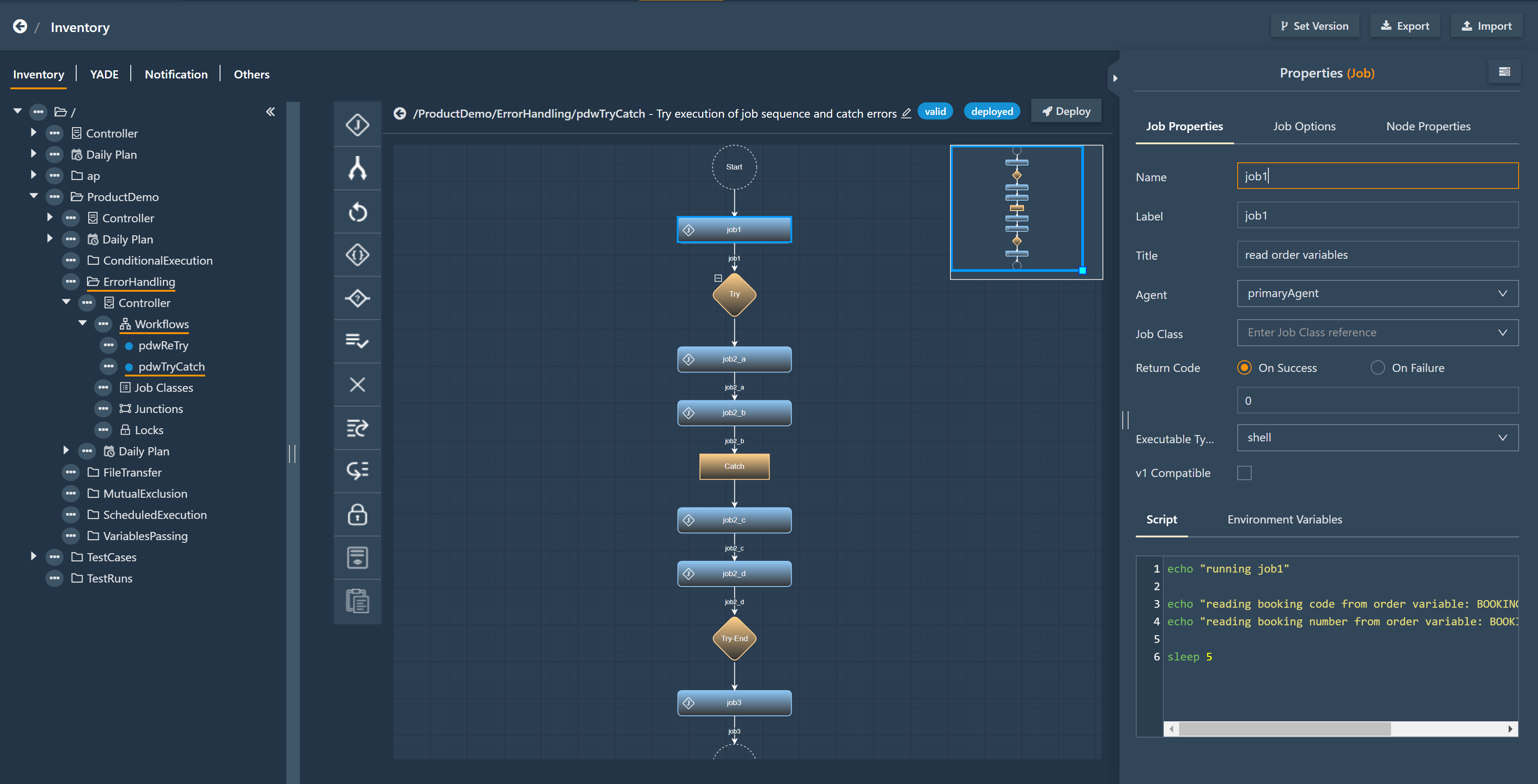Page History
| Table of Contents |
|---|
Introduction
- The Try/Catch Instruction adds
Purpose
- Add error handling to a number of job nodes in a workflow.
- If one of the jobs in the "Try" block fails, then the jobs in the "Catch" block are executed and those in the Try block are skipped.
- If a job in a
- Catch
- block fails, then the order is considered being failed.
- An empty Catch block can be used to force the successful outcome of order execution.
Jira server SOS JIRA columnIds issuekey,summary,issuetype,created,updated,duedate,assignee,reporter,priority,status,resolution columns key,summary,type,created,updated,due,assignee,reporter,priority,status,resolution serverId 6dc67751-9d67-34cd-985b-194a8cdc9602 key JS-2005
Feature Video
This video explains how to automate the handling of job errors in workflows.
| Widget Connector | ||
|---|---|---|
|
Workflow Instruction: Try/Catch
- Download exampleWorkflow Example (.json upload): pdwTryCatch.json
Explanation:
- If the first or second job within the Try block fails then the jobs in the Catch block will be executed and those in the Try block will be skipped.
- If the jobs in the Catch block are executed successfully then the order will continue with the instruction after the Try-End node and otherwise the order will fail and will be halted in the Catch block.
- An empty Catch block indicates successful outcome and makes an order move to the next instruction.
Further Resources
| Display content by label | ||||
|---|---|---|---|---|
|
Overview
Content Tools
